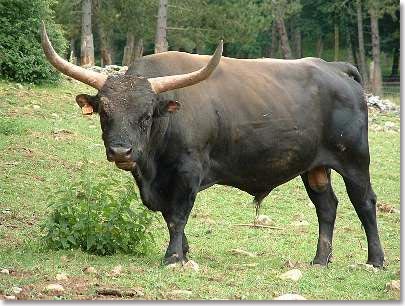7 differences between animals and wild animals
According to scientists, in the process of developing naturally or domesticated, people, animals and wild animals have different physical shapes that help them adapt to their environment. These differences between them are the result of evolutionary processes to adapt to living conditions.
1. Brains: Despite the similarities in body size, the cat's brain is still 23.9% lighter than their counterparts living in nature. Meanwhile, the dog's brain is 29% lighter than the wolf's brain, and when it comes to eating and sleeping, the pig's brain will be 34% lighter than that of wild boars.
2. Bowel: Very rare wildcat has a length of intestine reaching 1.5m, while this index in domestic cats is 2m. This is the result of adapting to a lower-meat diet in domestic cats.
3. Compared to domestic dogs, wolves have a narrower view. The view of a domestic dog is> 53 o , while the wolf is o . Left, wolves have larger feet, longer legs, golden eyes and larger teeth than domestic dogs. In addition, there are glands in the wolf's tail that give off the odor that signals the other members of the herd, while the dogs have sweat glands under the soles of the feet.
4. Although receiving the care of humans, the animals are much smaller than their fellow humans living in the wild. Height up to the shoulders of a mature bull (domesticated) averages only 1.5 m.

European bison (Photo: Softpedia)
As for the bulls, they can reach a height of 1.75m - up to the shoulders. In addition, the bison was different from the house where they had curved horns resembling a Greek Lia, and there was a pale stripe along the spine, and the bulls were usually dark. than the cows.
5. Compared to domestic pigs, wild pigs often have long legs because they have to adapt to the life around the muddy area, as well as to get fast steps when necessary, and their heads are also long and narrower.
6. The wild camel named Bactrian from the Gobi desert (between China and Mongolia) can be taken . salty water . And of course, camels that have been accustomed to living with humans will long end up dead if they foolishly try it. In addition, wild camels have longer feet than domesticated camels.
7. Wild sheep do not have thick fur like sheep. In the wild, both male and female sheep have horns, but the male horns are much larger. The horns of an adult male sheep can reach a weight of 14kg, which is equal to the total weight of the bones in its body combined. Wild sheep are much bigger than sheep. A mature wild sheep can reach 1.2 meters tall and weighs up to 140kg.

Wild Sheep (Photo: Softpedia)
Manh Duc
- Photography: 'Talking eyes' of wild animals
- American wild boar 'invades' Mexico
- Why did Australia destroy 2 million cats?
- Fascinating wild dogs with lovely looks, personality like wolves
- Strange tragedy of children living with wild animals
- DNA testing for wild dogs suddenly discovered the rare animals on the planet
- Mysterious children are raised by wild animals
- See pictures of migrant animals
- 7 species of wild animals are being eradicated by humans
- Kangaroo roars with wild dogs
- Wild tours are causing serious consequences
- Wild animals disturb schools
 Animal 'suffering' after hibernation
Animal 'suffering' after hibernation Why do goats climb well?
Why do goats climb well? Scientists were surprised to see chimpanzees eating turtles
Scientists were surprised to see chimpanzees eating turtles Giant catfish died deadly due to drought in Thailand
Giant catfish died deadly due to drought in Thailand